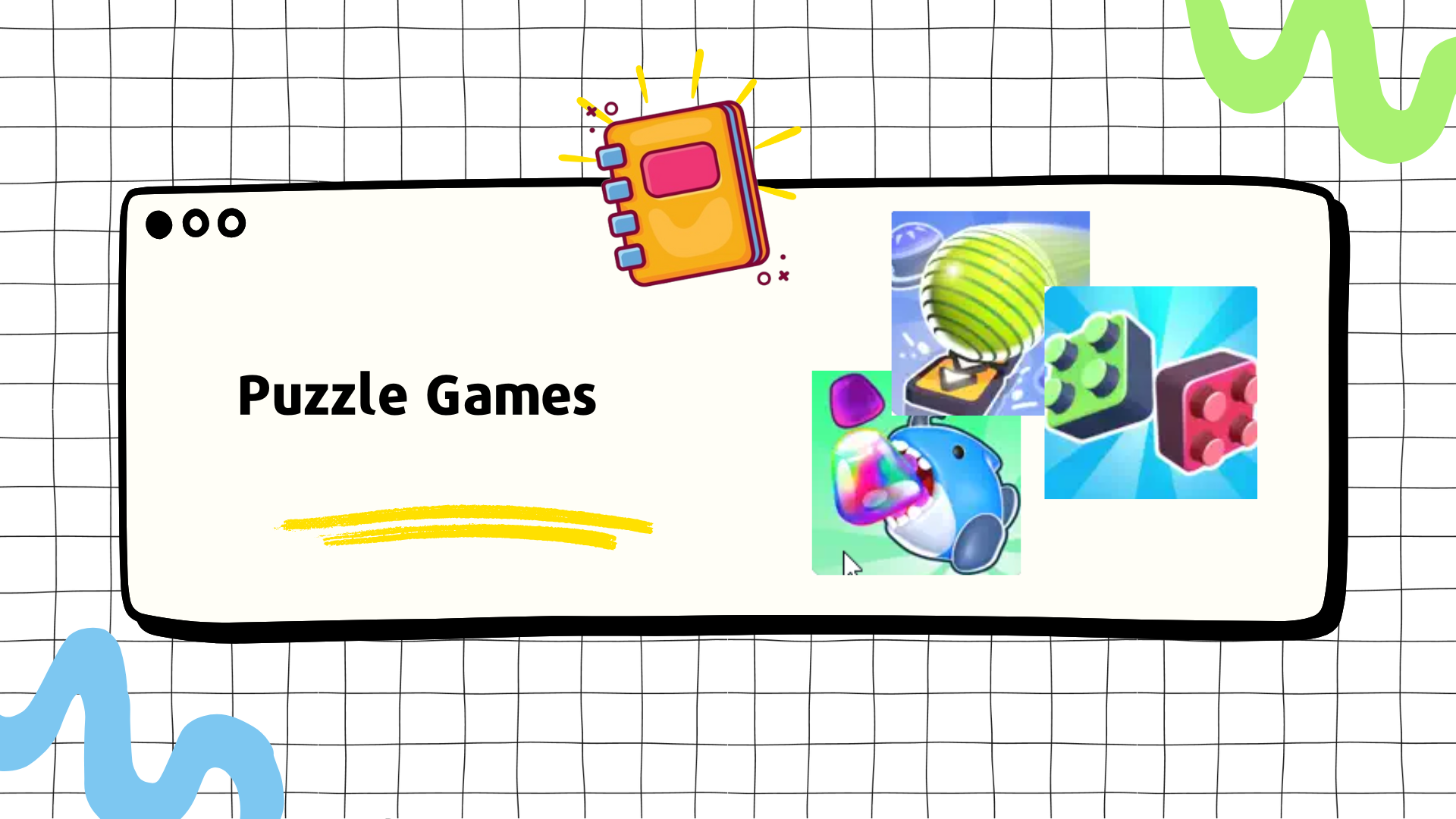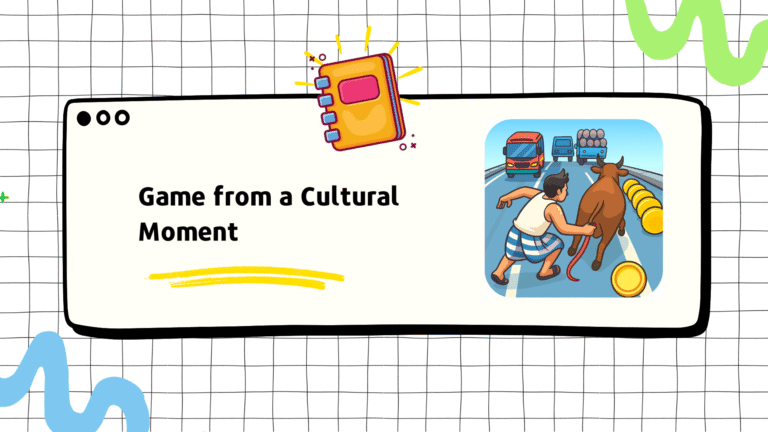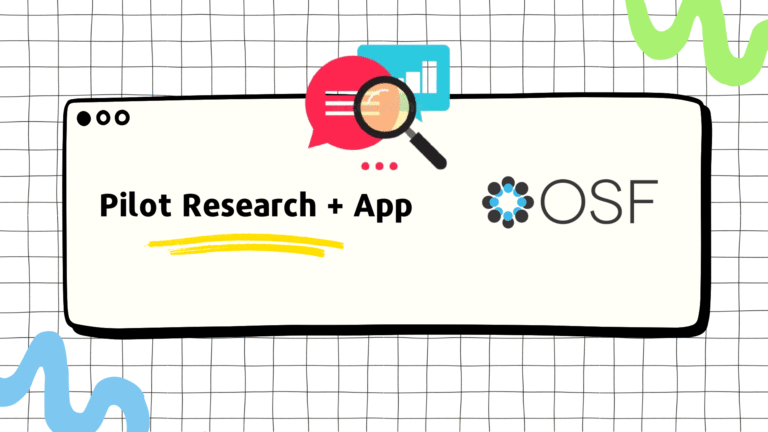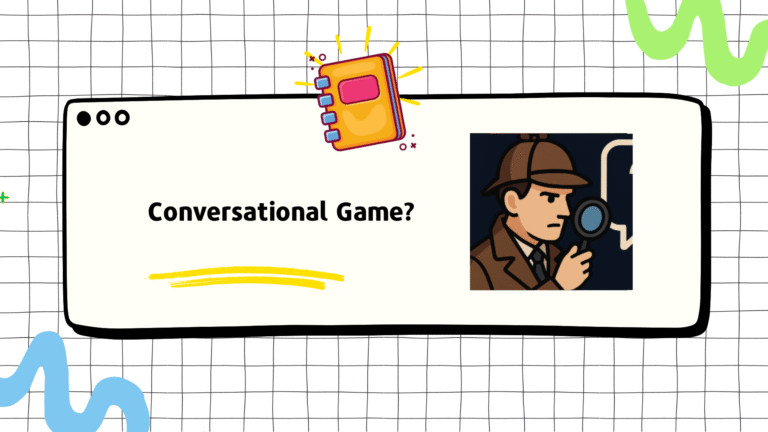During our first round of partnership with Voodoo, we aimed to innovate on puzzle games. The agreement was that we would challenge the traditional puzzle mechanics to find unique twists and fun innovations.
Here are the design principles we were following
- Repeatable gameplay
- The player should be able to do an action every 1-3 seconds
- Juicy visuals
- Potential to add variety to level design and objectives – level goals, special blocks, combos, powerups, etc.
- There should be an element of uncertainty (e.g., spawning system, hidden elements, etc.) that will help generate IAP revenues from end-game purchases and fail moments
- The concept should have a lose condition – this is what we will monetize
- Focus on proven core mechanics such as tap, swipe, draw/link
Here, I will share 3 games where we did exactly that
Munch Mania
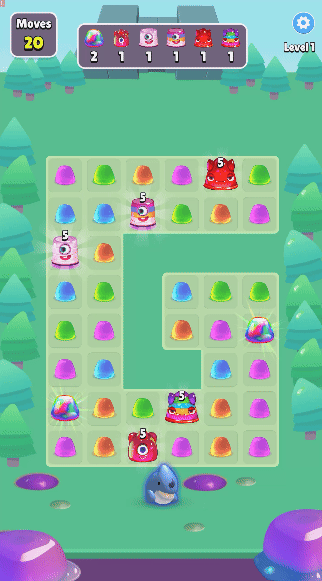
- Context & Role: I was the game & level designer. I wanted to innovate on the linker puzzle games. These are some linker games I wanted to innovate on: Best Fiends, Collect Em All!
- Hypothesis: I thought of putting a character inside a linker game. It definitely changes the game in a significant way. It also allowed me to put enemies with hitpoints. My assumption was that it would add a twist that would be fun to play
- Mechanics Tested: Normally, in a linker, the player can start the link from anywhere. But with a character, the link should always start from the player. After a successful link, the player will follow the link to the end, and the next link will start from the new position. That way, we can add a story with the character. I went for a tiny shark wanting to eat jelly
The enemies also provided an interesting twist. Now, the goal was not only to collect colored jellies but also to destroy the enemies. To destroy an enemy with 5 health, the player would need 5 links before reaching the enemy. - Iteration: With thorough playtesting, I found that using a small variation of jellies (3-4 colors) was ideal as they provided the most fun experience. I also added a rainbow jelly using which player can swap color mid-link
- Outcome & Insight: The game returned a CPI of $2.2 on Android, which was more than we can work with. The retention D1 was stuck at 18%
- Reflection: The insights indicate that the game does not look attractive from the get-go in terms of art and feel. From some player feedback, I saw that players were not clear on what they needed to do most of the time. The enemies were not clear in what they do and how to defeat them. It was not apparent why they should make big chains.
I understood the following about puzzle games- Clear visuals are crucial for puzzles.
- The player should be able to do the next action in 1-3 seconds. It was taking longer in our game
- A clunky onboarding can break a game
Pinball Sort
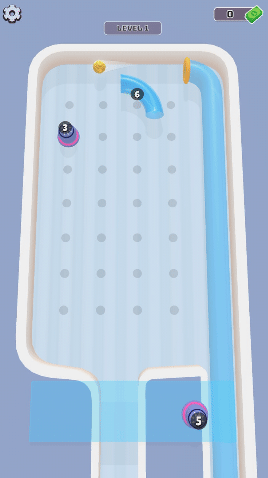
- Context & Role: I was the game & level designer. I wanted to innovate on the Hexa Sort gameplay. Hexa Sort had great in-game KPI. I wanted to take the learnings from it and use them in a new frame
- Hypothesis: Reversing a pinball mechanic sounded fun to me. My assumption was that reframing a successful rule set to make a physics-based sandbox simulation would work well
- Mechanics Tested: In Hexa Sort, the player placed items on a grid. Win = remove x items, Lose = Run out of space. I framed the pinball mechanic similarly. The player can place different pinball items in the grid. Items have HP and can be removed from the grid using x number of hits = Win. Similarly, lose = Run out of space
- Iteration: During playtesting, I found some issues. I was forgetting the ball projectile and misplacing items due to that. It becomes easier when the board is filled. The main problem was the simulation speed and that the game was asking a lot from me. I played around with the simulation speed to fix some of those issues
- Outcome & Insight: The game returned a CPI of $1.3 on Android, which was not bad. The retention D1 was stuck very low at 12%. Another big problem was that the creative that had the most spend (90%) was not reflecting our original puzzle gameplay. That has a big contribution to the low D1
- Reflection: It proves that the game’s core mechanic was not as attractive to the users on first impression.
I also understood the following about puzzle games- Copying ruleset from one game into a completely new type of game will not work unless the fit is right
- The input to output in a puzzle must be fast and snappy
- The output should be predictable given an input
- High cognitive load will break the immersion of the game
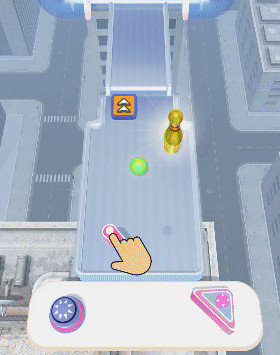
Tetra Blast
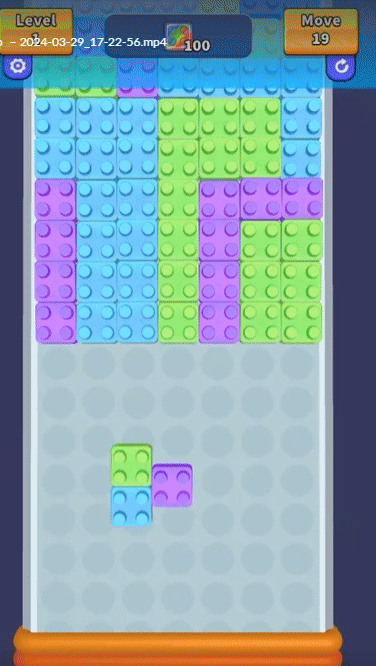
- Context & Role: I was the game & level designer. This time, I wanted to innovate on the blast games. These are some blast games I wanted to innovate on: Bubble Witch, Bubble Tower
- Hypothesis: I wanted to combine the bubble shooter mechanic with Tetris. My assumption was that it would invent a fresh mechanic that would be fun to play
- Mechanics Tested: Instead of shooting single color units like in bubble shooter, I used the Tetris-like blocks and similar input. That way, the game input feels like Tetris, but instead of the slow line-by-line matches, it will match the rules of bubble shooter. This should elevate the fun and use the learnings of fast impact that I took from earlier prototypes
- Iteration: After playtesting, it felt fun. I also added a power-up mechanic where, after a certain number of points, the player gets a bomb, using which they can destroy all the colors that it touches.
- Outcome & Insight: The game returned a CPI of $1.4 on Android, which was a bit on the higher end. But it was still workable. It had a D1 retention of 28% which was the highest till then in puzzles. The retention D7 was also strong at 10%.
- Reflection: The insights indicate that the was looking attractive and fun. It also played great
I understood the following- Fast feedback loops are great for puzzles, as seen by the improvements in KPI
- Merging game mechanics can work when they complement each other. Tetris and Bubble Shooter had similarities in how units were thrown into a grid of units to untangle the structure.


